
27
3
CHAPTER
The Tactics of
Six Sigma
Define, Measure, Analyze,
Improve, and Control
In the first months of adopting Six Sigma as a management phi-
losophy, the workforce may not see any differences in their organi-
zation. This is because, as we stated in Chapter 2, executive
management is doing their job creating the strategy for Six Sigma
to be more than a set of tools and techniques.
As we stated in Chapter 2, management must begin to identify
the key processes of the organization and begin collecting data on
current levels of effectiveness and efficiency measured in terms of
current sigma performance. From these activities, certain processes
will be identified as lower performing, higher impact (to the busi-
ness objectives) projects.
These first projects are critical to the organization. For Six
Sigma to be successful in your organization, the first “wave” of proj-
ects must be successful. Successful projects help the people in the
organization see that Six Sigma works for them. Initially, there will
be people who are skeptical about Six Sigma. These individuals will
not be convinced of the importance of Six Sigma by refer
encing

28 SIX SIGMA FOR EVERYONE
success stories elsewhere. They will be convinced that Six Sigma
works only if they see it with their own eyes. Therefore, those in-
dividuals chosen to be part of the first wave of Six Sigma projects
have an extra expectation, helping to convince those in the organi-
zation that Six Sigma will work.
In Chapter 2, we saw that the food ordering process had poor
delivery sigma performance. It is typical in the first wave of projects
for an organization to choose 7 to 10 projects for improvement
based on impact to the business and current poor performance. In
Chapter 3, we focus on two of the projects that Fast Food Is Us
chose for their first wave of projects, the food delivery project and
the drive-thru wait project.
The Concept behind Six Sigma Tactics
Working in any business environment can be a challenging en-
deavor. Most work environments are high-paced, energy draining
experiences where everything has to be done at once. Unfortu-
nately, these work environments end up being like a duck crossing
a pond. On the surface, the duck looks like it is calmly traveling
across the water. However, underneath the water line, the duck is
furiously paddling.
What the Six Sigma tactics at the project level are trying to ac-
complish is greater effectiveness and efficiency. Whether it is the
food ordering process or improving drive-thru speed and accuracy,
what a group of five to eight individual contributors are trying to
accomplish is to improve the process they live in.
Six Sigma tactics at the project level require you to participate
on a team for four to six months. It requires you to spend about 20
percent of your time for work on the project. You will still be ex-
pected to get your normal work done. You shouldn’t complain about
the apparent “extra” work to be done being part of a Six Sigma
team. You have been chosen to improve a process that is broken,
that is, where you experience the difficulties of being ineffective
and inefficient. Your management is devoting significant resources
to the improvement of your work area. Treat this as an opportunity
to make things better in your job, not as something extra to do.

The Tactics of Six Sigma 29
To understand Six Sigma tactics conceptually, think of being
back in school in science class. You may remember learning about
the scientific method. The scientific method identifies some prob-
lem, measures the magnitude of that problem, determines why the
problem exists, and generates a set of solutions to ensure that
the problem goes away.
The tactics of Six Sigma and the project team you are on im-
plements a set of tools and techniques associated with the scien-
tific method. Figure 3.1 shows you the steps associated with the
scientific method in Six Sigma language.
The Five Steps of Six Sigma Tactics
There are five high-level steps in the application of Six Sigma tac-
tics. As can be seen in Figure 3.1, the first step is Define. In the
Define step, the project team is formed, a charter is created, cus-
tomers, their needs and requirements are determined and verified,
and, finally, a high-level map of the current process is created.
Figure 3.1 High-level DMAIC improvement methodology.
Measure
Define
Improve
Control
Analysis
• Charter.
• Customer needs, requirements.
• High-level process map.
• Data
collection plan.
• Data
collection plan
implementation.
• Solution generation.
• Solution selection.
• Solution
implementation.
• Data analysis.
• Process analysis.
• Root cause analysis.
• Control methods.
• The response plan.

30 SIX SIGMA FOR EVERYONE
The second step of the application of Six Sigma tactics is Mea-
sure. It is in this second step that the current sigma performance
is calculated, sometimes at a more detailed level than occurred at
the strategic level of Six Sigma.
The third step in applying Six Sigma tactics is Analysis. During
this step, the team analyzes data and the process itself, finally lead-
ing to determining the root causes of the poor sigma performance
of the process.
The fourth step of applying Six Sigma tactics is Improve. In
this step, the team generates and selects a set of solutions to im-
prove sigma performance.
The fifth and last step is Control. Here a set of tools and tech-
niques are applied to the newly improved process so that the im-
proved sigma performance holds up over time.
As can be seen in Figure 3.1, the Define step of applying the
tactics of Six Sigma includes three substeps. These substeps are
called tollgates. Each of these tollgates indicates the specific work
a project team must complete as they progress through each of the
steps of Define, Measure, Analyze, Improve, and Control. These
steps are shortened and known by their initials DMAIC.
The concept of the tollgate is relatively simple. If you ever have
traveled on a turnpike, you know you pass through tollgates where
you have to stop to pay a toll. Think of the tollgate of DMAIC in a
similar fashion. Each tollgate should be seen as formal demarca-
tions on the quality highway to improved sigma performance.
The Define Tollgates
There are three Define tollgates: Charter; Customers, their needs
and requirements; and the High Level Process Map.
1. The Charter
The Charter is the collection of documents that provide purpose
and motivation for a Six Sigma team to do its work. It includes:
•The business case: This is a sentence or two that describes
why this project should be done, why it has priority over
other projects, and indicates the strategic business objec-
tive(s) the project impacts.

The Tactics of Six Sigma 31
•
The problem statement: This is a short measurable statement
about the problem. It should indicate how long the problem
has been going on, be stated as specifically as possible, de-
scribe the gap between the current and desired state, de-
scribe the impact of the problem, and be stated in neutral
terms with no blame, perceived solution(s) or root cause(s).
•Project scope: Scope refers to what the team should focus
on but more importantly what the team should try to avoid.
Six Sigma teams often fail when they don’t clearly define
what to work on and what not to work on.
•Goals and objectives: The goals and objectives are what the
team should strive to achieve in the four to six months they
exist. Typically, a first wave Six Sigma team should aim at
improving the problem by 50 percent.
•Milestones: Milestones indicate to the team where they
should be in the DMAIC process and when. For example,
Define and Measure should take no more than 8 weeks of
the project. Analysis should take no more than 6 weeks after
Measure. Improvements should be implemented in the next
12 weeks. As a result of these milestones, the team should
be ready to implement Control at the end of those 12 weeks
devoted to Improvement implementation.
•
Roles and responsibilities of the project team: There are sev-
eral roles critical to the success of the Six Sigma team. First,
there is the Champion. The Champion is usually the process
owner who guides the project team strategically but will usu-
ally not be a full-time team member. They assist in picking
the team, providing resources, and removing roadblocks that
get in the way of the team doing its work. Second, there is the
team leader, who is called the Black Belt. The Black Belt is
responsible for the day-to-day activities associated with the
team, from setting the team agendas, to keeping the team on
track with meeting the specific responsibilities of DMAIC. If
the team leader has organizational responsibilities other than
being a team leader they are called a Green Belt. The Master
Black Belt is equivalent to an internal consultant. They are
not full-time members of the team but as
sist the team with


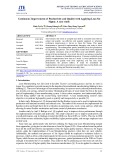
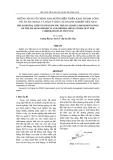
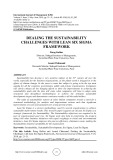


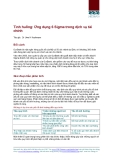
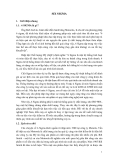




![Tối ưu hóa hiệu suất hệ thống: Bài thuyết trình [Chuẩn nhất]](https://cdn.tailieu.vn/images/document/thumbnail/2025/20251107/hiepdz2703@gmail.com/135x160/35941762488193.jpg)



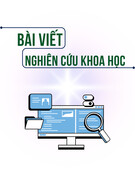
![Bài giảng Quản trị chất lượng trong công nghiệp thực phẩm [chuẩn nhất]](https://cdn.tailieu.vn/images/document/thumbnail/2025/20250805/vijiraiya/135x160/637_bai-giang-quan-tri-chat-luong-trong-cong-nghiep-thuc-pham.jpg)

![Đề cương bài giảng Kỹ năng hoạt động công nghiệp [mới nhất]](https://cdn.tailieu.vn/images/document/thumbnail/2025/20250715/kimphuong1001/135x160/76971752564028.jpg)


![Bài giảng Kỹ thuật điều độ trong sản xuất và dịch vụ [mới nhất]](https://cdn.tailieu.vn/images/document/thumbnail/2025/20250630/dcbaor/135x160/13121751251866.jpg)


